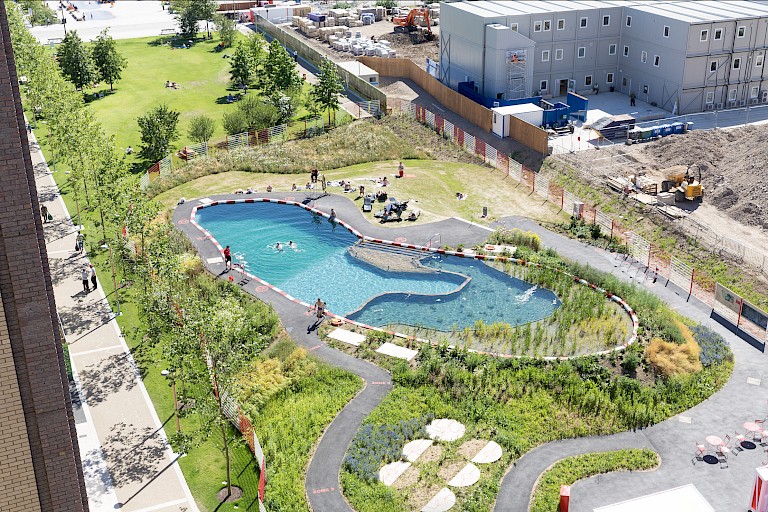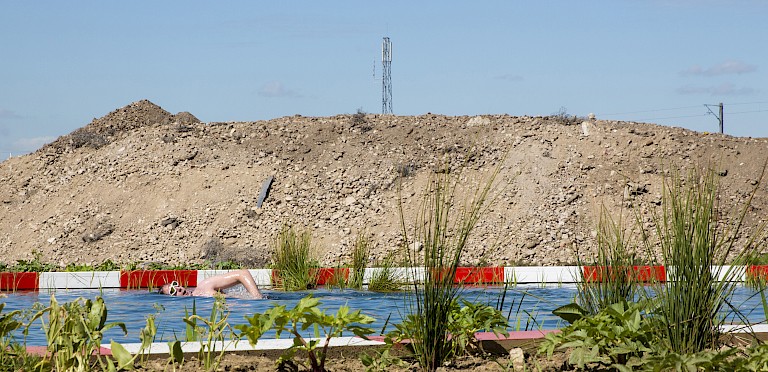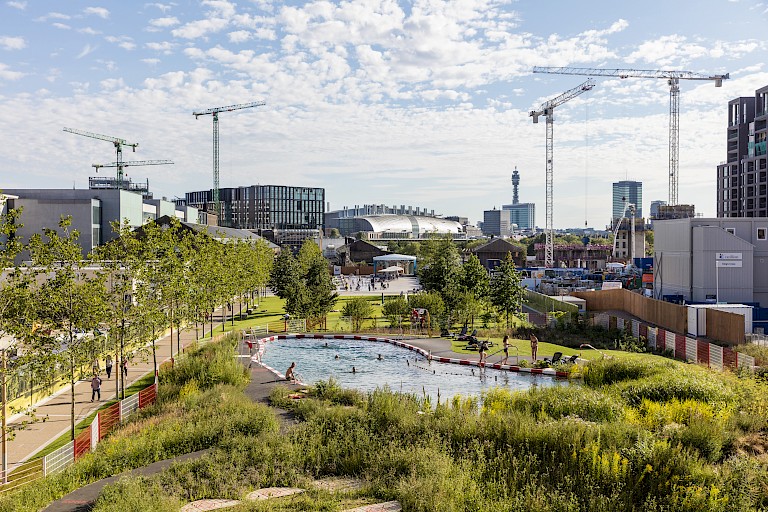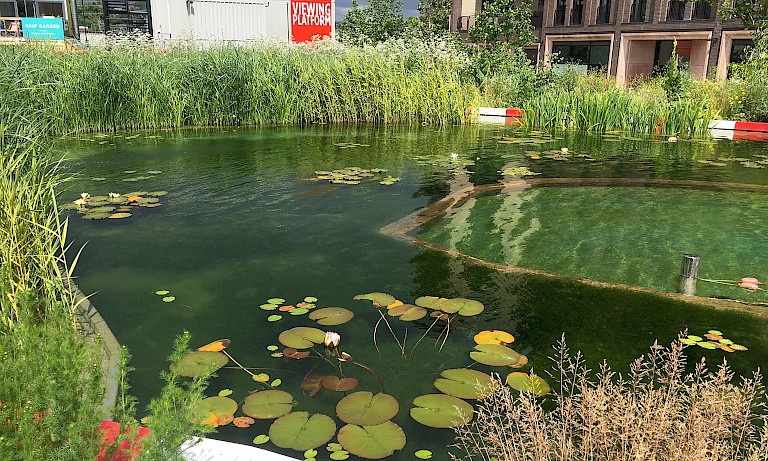



Of Soil and Water: King’s Cross Pond Club is an art installation in the form of a natural bathing pond, at Lewis Cubitt Park in the King’s Cross development site, London and is designed as a collaboration between Berlin based Slovenian artist Marjetica Potrc and Dutch based architects Ooze (Eva Pfannes and Sylvain Hartenberg) (they have worked together on several large scale collaborations). Potrč's interdisciplinary practice includes on-site projects, research, and architectural case studies. Her work documents and interprets contemporary architectural practices in particular with regard to energy infrastructure and water use and the ways people live together. Her work has developed at the intersection of visual art, architecture, and social science.
For Of Soil and Water Marjetica Potrc together with OOZE architects built a micro ecological environment with a natural swimming pont in its centre, a 40 metre long pond on King’s Cross, a busy area in the metropolitan city of London, which gave space to over 100 bathers at the same time. People swim in the midst of a lively construction sites with cranes and trucs in a pont of water that is entirely chemical free. The water is purified by natural processes using plants, nutrient mineralisation and a set of filters to supplement natural filtration. Once cleaned the water loops back in the pond to complete the water cycle. The daily number of bathers is restricted by the amount of water the system is able to clean. The use of the pond range from an area of meagre soil and pioneer plants, to a meadow area of rich soil with lush grass and wild flowers. As they grow, the plants clean and enrich the soil of this urban construction site. The enclosed site presents the natural environment in miniature, a landscape in motion, a theatre of ecological cycles: the water cycle, plant cycle and soil cycle. It is a mise en scene of the processes that occur between humans, water, soil and plants. Here the joy of swimming combines with awareness of our responsibility towards the environment. The elevated pond becomes a stage where the swimmers perform the balancing act of co-existing with nature in the heart of a metropolitan city, learning to understand human boundaries, the regenerative power of nature and pointing to new visions of nature-culture relations.
From the researcher -
Of Soil and Water: The King’s Cross Pond Club celebrates the power of nature to regenerate itself and to modify human behaviour in the heart of the city. In a fun and playful way it reveals to people the importance of our dependency on nature, that is not something outdoor but is a part of us, both in and outside of our cities. It focuses on two natural resources and commons that are often taken for granted but on which we vitally depend and which we are increasingly exhausting and privatizing in our current style of living: soil and water. The project is a living laboratory in the midst of a buzzling city revealing the resilient ability of nature to restore itself while making human activity an important part of its eco system. This project makes very clear the value and importance of art, which is more then an ecological regenerative landscape design, but as an art work it succeeds in making all these complex relations visible and as art it is presented as a micro ecological environment making people aware of their lives on a multi species planet and offering a vision to more sustainable ways of living and the agencies of other life forms in co designing mutual shared spaces. Linking personal behaviour to larger, communal or global structures is an important juxtaposition that typifies this art work.




